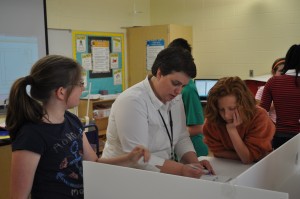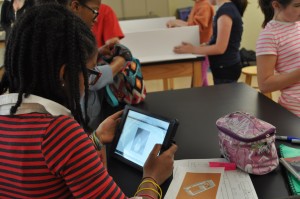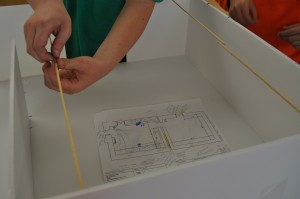- Art Home
- Exhibitions
-
Explore the Collection
- Explore the Collection Home
- African Art
- American Paintings, Sculpture and Drawings
- Contemporary
- Decorative Arts and Design
- East Asian Art
- European Paintings, Sculpture and Drawings
- Fashion Arts and Textiles
- Musical Instruments
- Indigenous American Art
- Photography
- Prints
- South Asian Art, Islamic Art and Antiquities
- Conservation
- Meet the Curators
- Digital Resources
- Events & Programs Home
- Calendar
- Accessibility
- Adults
-
Families & Teens
- Families & Teens Home
- 10x10 Teen Art Expo
- Art on the Rise
- Art Together: Art Making for Families with Children Ages 3–5
- Baby Tours
- Boy Scouts / Girl Scouts
- CAM Kids Day
- Choose Your Own Gallery Adventure
- Family Storytime and Gallery Walk
- Family Studio: Art Making for Families with Children Ages 6–12
- REC Reads
- Rosenthal Education Center (REC)
- See Play Learn Kits
- Summer Camp
- Teachers
- Community Outreach
- Fundraisers
- Plan Your Own Event

- Art Home
- Exhibitions
-
Explore the Collection
- Explore the Collection Home
- African Art
- American Paintings, Sculpture and Drawings
- Contemporary
- Decorative Arts and Design
- East Asian Art
- European Paintings, Sculpture and Drawings
- Fashion Arts and Textiles
- Musical Instruments
- Indigenous American Art
- Photography
- Prints
- South Asian Art, Islamic Art and Antiquities
- Conservation
- Meet the Curators
- Digital Resources
- Events & Programs Home
- Calendar
- Accessibility
- Adults
-
Families & Teens
- Families & Teens Home
- 10x10 Teen Art Expo
- Art on the Rise
- Art Together: Art Making for Families with Children Ages 3–5
- Baby Tours
- Boy Scouts / Girl Scouts
- CAM Kids Day
- Choose Your Own Gallery Adventure
- Family Storytime and Gallery Walk
- Family Studio: Art Making for Families with Children Ages 6–12
- REC Reads
- Rosenthal Education Center (REC)
- See Play Learn Kits
- Summer Camp
- Teachers
- Community Outreach
- Fundraisers
- Plan Your Own Event
Blog
Blog
- Home
- Plan Your Visit
-
Art
- Art Home
- Exhibitions
-
Explore the Collection
- Explore the Collection Home
- African Art
- American Paintings, Sculpture and Drawings
- Contemporary
- Decorative Arts and Design
- East Asian Art
- European Paintings, Sculpture and Drawings
- Fashion Arts and Textiles
- Musical Instruments
- Indigenous American Art
- Photography
- Prints
- South Asian Art, Islamic Art and Antiquities
- Conservation
- Meet the Curators
- Digital Resources
-
Events & Programs
- Events & Programs Home
- Calendar
- Accessibility
- Adults
-
Families & Teens
- Families & Teens Home
- 10x10 Teen Art Expo
- Art on the Rise
- Art Together: Art Making for Families with Children Ages 3–5
- Baby Tours
- Boy Scouts / Girl Scouts
- CAM Kids Day
- Choose Your Own Gallery Adventure
- Family Storytime and Gallery Walk
- Family Studio: Art Making for Families with Children Ages 6–12
- REC Reads
- Rosenthal Education Center (REC)
- See Play Learn Kits
- Summer Camp
- Teachers
- Community Outreach
- Fundraisers
- Plan Your Own Event
- Give & Join
- About
- Tickets
- Calendar
- Exhibitions
- Blog
- Shop
Partnering with PIE
by Mary Claire Angle
6/6/2014
learning & interpretation , education , educators , in the classroom , community outreach , Mary Claire Angle , STEM , STEAM , Google Art Project
This spring the Cincinnati Art Museum worked with Sands Montessori through a pilot partnership initiated by Cincinnati-based educational non-profit, Partnership for Innovation in Education, more commonly known as “PIE.” The goal of this partnership was to encourage case-based learning in the classroom with an emphasis on “STEM” (science, technology, engineering and math) curricula. The case-based learning approach gives students a real world problem that could be encountered in a job situation; students must find a solution to the problem while integrating science, technology, engineering and math. Of this pilot partnership Mary Welsh Schlueter, CEO of PIE says “This innovation in the classroom engages students, and they have fun while they are learning. We will turn this experience into a curriculum so other schools can use this methodology. The Harvard-style case based learning is traditionally used only at the college level.”
STEM certainly provides students with important skills and knowledge to prepare them for the jobs that will be driving our economy in the future, however there is one other ingredient that has been left out of the pie that many argue is just as essential to K-12 education. That ingredient is: art.
While the Cincinnati Art Museum’s PIE partnership with Sands Montessori used a STEM curriculum, we also added “A” for art, thus encouraging “STEAM.” By no means are we the only ones with an ambition for STEAM in schools. There has been a drive for science, technology, engineering, math AND art sweeping the nation ever since STEM came to the forefront of the national educational agenda. RISD (Rhode Island School of Design) has been a leader in the STEAM initiative. They have even released an interactive map online that shows where across the nation STEAM is taking place filtered by research, education, policy and industry: http://map.stemtosteam.org
To highlight how the Cincinnati Art Museum has been advocating for STEAM, let me share with you further about our PIE partnership. We began work in February with Sands Montessori’s 4th, 5th and 6th grade Superior Cognitive Enrichment classes led by Gifted Intervention Specialist, Diane Tenaglia, with oversight by Julie Ayers, Principal of Sands Montessori.

For several months students, divided into three teams, worked collaboratively in the case-based learning format to develop Cincinnati-themed art exhibitions. The problem proposed in our case was that the art museum needed to design an art exhibition within limited gallery space. Sands’ students approached the exhibition problem with enthusiasm, and by igniting their science, technology, engineering, math, creativity, critical thinking and problem solving skills they collaboratively developed three exhibition solutions that thoughtfully considered, researched and answered the following:
- What would be a great exhibition concept?
- Who would visit our exhibition?
- Is the exhibition accessible for individuals with disabilities?
- What text, if any, would be included?
- What colors should be used in the gallery to best showcase the art?
- How do we keep the artworks safe?
To aid in student understanding of how they could approach the case, the art museum had art conservators and an exhibition designer visit the classroom to engage in discussion on precautions to take with protecting the art as well as popular trends in exhibition design.
Students also accessed Cincinnati works of art in the Art Museum’s permanent collection through Google Art Project. By using the Google Art Project, students could compile their own online collections of Cincinnati art. They then worked together with their teammates to decide which works of art would actually go in their exhibitions and which would be eliminated.

Furthermore, the dimensions of actual art museum gallery space was provided, which required students to reflect on how many works of art would best fit in the space and calculate where they should be located.
The project culminated with each of the three teams building a 3D model of their Cincinnati-themed exhibition. These models provided a visual demonstration of their final concepts and actually displayed how the students would display their selected works of art.

Stage two of the process will happen this summer as Northern Kentucky Universitystudents develop an app inspired by Sands’ students’ experiences with this PIE partnership. Previous brainstorming sessions with students have included talk about an art heist app, but we will have to wait and see. More to come about this later!
The strength of STEAM in case-based learning is all in the process. It is in the process of solving the real-world situation of developing an art exhibition that the students employed the principles essential to the STEAM. They learned about the scientific methods involved in art preservation. Through technology they discovered the Google Art Project and ways to access art online. By careful planning and calculating they used appropriate engineering and math skills to design models of exhibition space that took into consideration visitor accessibility and protection of the art. And the final ingredient that was sprinkled liberally throughout the entire process was art. By incorporating art education into this process, students had the freedom to think creatively and critically as they designed their exhibitions. Each of the three final 3D models was unique and showcased the art of the Queen City in different, but all successful ways.
We had a small reception for students and families at the Cincinnati Art Museum on May 17th, 2014. Proud students showed off their exhibition models to family members and celebrated the completion of a successful project.
– Mary Claire Angle, Assistant Director of School-Based Learning
References:
Cincinnati, OH 45202
Toll Free: 1 (877) 472-4226
Museum Hours
Museum Shop
Terrace Café
Library
The Cincinnati Art Museum is supported by the generosity of tens of thousands of contributors to the ArtsWave Community Campaign, the region's primary source for arts funding.

Free general admission to the Cincinnati Art Museum is made possible by a gift from the Rosenthal Family Foundation. Exhibition pricing may vary. Parking at the Cincinnati Art Museum is free.
Generous support for our extended Thursday hours is provided by Art Bridges Foundation’s Access for All program.

General operating support provided by:




